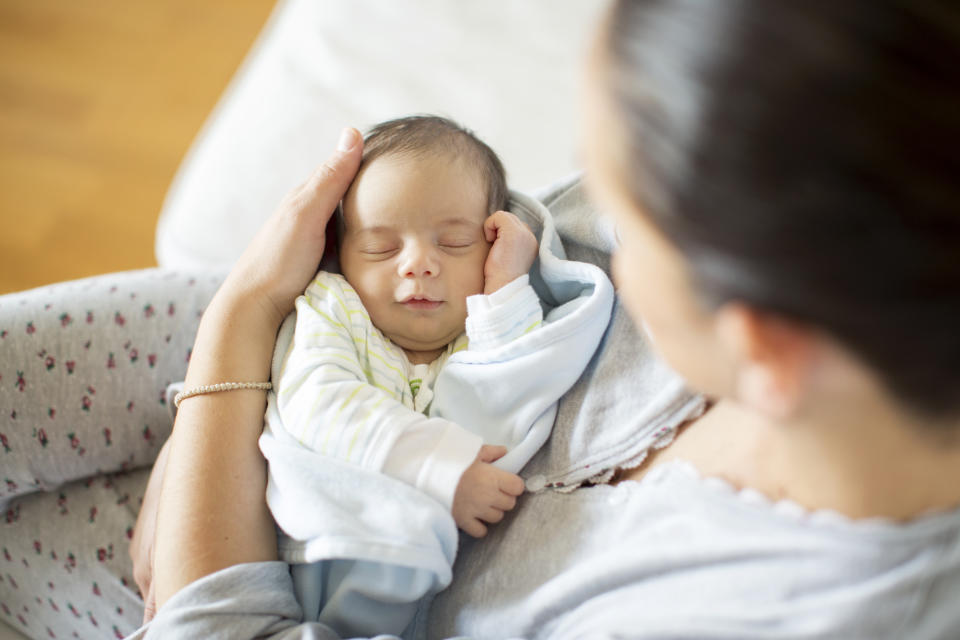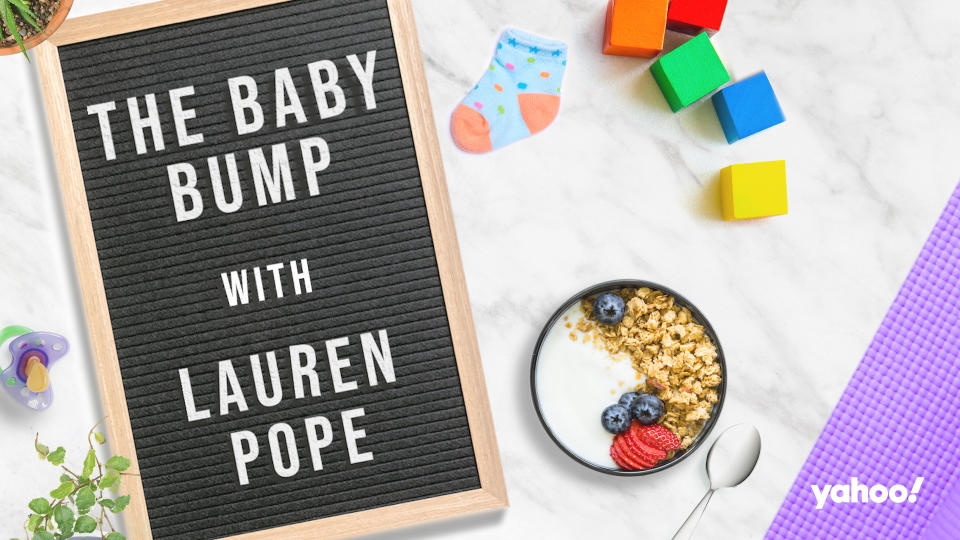How to safely put your baby to bed, according to sleep expert
“How’s your baby sleeping?”
It’s a question all new parents will receive and the answers vary from a positive shrug to a tired sigh.
Getting your baby to sleep in the first few weeks can be tough, but it’s no surprise. They’re adjusting to a whole new world outside your womb and need the reassurance that you’re there beside them.
Many experts agree that the first 12 weeks are the toughest, but there are plenty of ways to make the womb to world transition a little easier on your new baby - and you.

Nurture expert, Hannah McDade, talks Lauren Pope - who has recently given birth to a baby girl - through the process on Yahoo UK’s pregnancy series, The Baby Bump with Lauren Pope.
Read more: Parents reveal reaction to children’s autism diagnosis
“The safest place for your baby to sleep is a separate cot or Moses basket in the same room as you for the first 6 months, even during the day,” McDade explains.
So, while having the nursery set up and ready to go looks great, it’s not that essential in those first few months, although it might be easier to get it ready now while you’ve got the time.
“With so many products on the market, it can be easy to get confused about what babies should sleep in or on. Remember, the safest mattresses for your baby are firm and flat and protected by a waterproof cover.”
Read more: Here’s how to soothe an unsettled baby
New parents have three options for bedding; swaddling, sleeping bag or blanket.
McDade explains each one in a bit more detail: “Some believe swaddling young babies can help them settle to sleep as babies are born with certain reflexes and one of these is the startle reflex (this is where a baby suddenly flails their arms around everywhere). It’s an evolutional thing as a preventative from sleeping too long in case of danger around.
“Unfortunately, our babies don’t know that they’re safe and sound in our homes and no danger is lurking. Swaddling inhibits this reflex, so babies don’t wake themselves as their arms are to their chest.
“A benefit of swaddling is that keeping their arms central keeps babies feeling calm and organised too. Whilst I do not advise for or against swaddling, I would urge parents to follow the advice before doing so.”
McDade’s key advice for people considering swaddling their child includes:
Do not swaddle higher than the shoulders
Never put a swaddled baby to sleep on their front
Do not swaddle too tight
Check the baby’s temperature to ensure they do not get too hot
“Baby sleeping bags are another option. These prevent your baby’s head from being covered by wriggling under bedding.
“You can choose different togs for different seasons to help keep your baby at the right temperature. It is important that the sleeping bag fits wells around the shoulders, so your baby’s head doesn’t slip into the bag. Extra bedding should not be needed.”
The final option is blankets, which is the most traditional of the three options. McDade explains: “Make sure these aren’t too thick or doubled over. If you’re going to use blankets make sure these are firmly tucked in and come no higher than your baby’s shoulders.”
Read more: Why keeping calm is imperative when administering first aid
Once you’ve made a decision on the type of bedding you’d like, it’s time to consider how your baby should sleep.
“Your baby should always be ‘feet-to-foot’ end of the cot, this is to avoid baby’s face being covered by loose bedding,” McDade says.
It’s also worth noting that babies should always be put to sleep on their backs for every sleep - day and night - this is to prevent SIDS. When your baby is able to move about by themselves, they will be able to find their own safe sleeping position.





